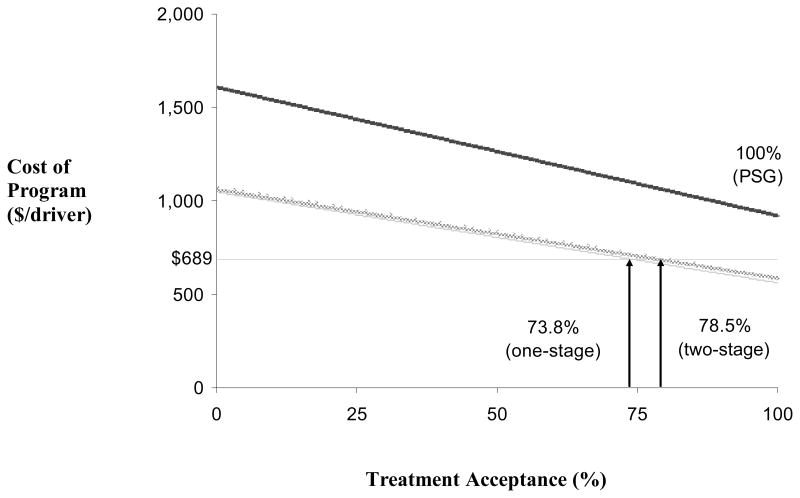Figure 3.
Cost per driver screened of screening, treatment, and crashes for each of four programs, as a function of the rate of treatment acceptance. The cost of doing nothing (horizontal line) is fixed at $689, due to the fixed cost of crashes due to missing all cases. Full polysomnography (heavy black line) derives its cost from testing, treatment, and from crashes among those who do not accept treatment. The cost declines with increased treatment acceptance but is always greater than doing nothing, even at 100% treatment acceptance. Screening with the one-stage (thin gray line) or the two-stage (wide solid gray line) methods incurs costs from testing, treatment, and crashes not only due to incomplete adherence, but also from variable numbers of missed cases. As long as treatment acceptance is at least some minimum value, a given screening program is less expensive than not screening. For one- and two-stage screening to be cost-effective, these rates are 73.8% and 78.5%, respectively. Full polysomnography is never cost-effective, since it never crosses the “do nothing” line, even when treatment acceptance is 100%.

